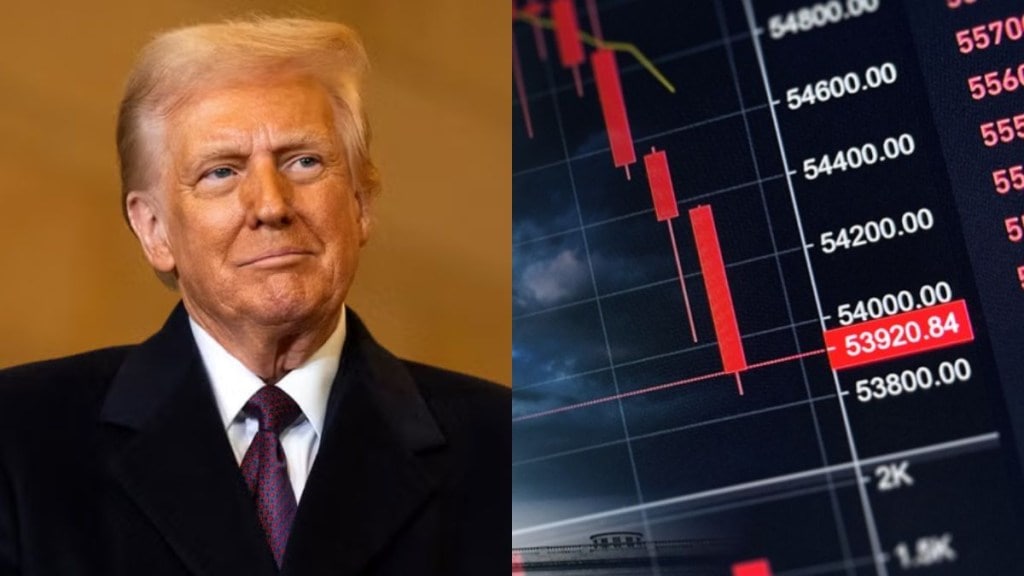As Trump completes 200 days in the White House, the term ‘Trump tariffs’ has become familiar to most of the households. For the Trump administration, tariffs were introduced for various reasons, including reducing the trade deficit, improving domestic manufacturing, enhancing border negotiations, and sticking to Trump’s ‘Make America Great Again’ agenda.
However, recent reports from Goldman Sachs and Bloomberg present a different perspective. Goldman’s latest report now states how tariffs are affecting corporate earnings in the US and warns that consumers will ultimately bear the consequences.
Tariffs function as taxes on imported goods, raising costs for US companies, especially in industries like manufacturing, retail, and technology. Despite efforts to pass some of these costs onto consumers, the reality has been a partial pass-through, meaning that companies have had to absorb a substantial portion of the increased costs.
Goldman Sachs estimates that while businesses aim to pass on up to 70% of tariff costs to consumers, only a smaller percentage is realised, putting pressure on profit margins and corporate earnings.
Impact on corporate earnings
According to Goldman Sachs, businesses that depend on imported materials are incurring greater costs as a result of tariffs, especially for raw materials like steel and aluminium. Many companies have been compelled by this to reconsider their pricing policies.
Businesses and consumers have not, however, been equally burdened by these tariffs. According to Goldman Sachs, US consumers bear roughly 70% of the tariff costs, compared to 49% according to the Federal Reserve business survey.
However, US companies bear a greater share of the costs than they had expected, especially those in industries more vulnerable to tariff-related expenses. Profit margins are therefore under tremendous pressure.
Trump tariffs’ impact on S&P 500
Goldman Sachs projects that the S&P 500’s earnings-per-share will rise by a moderate 7% to $262, which is marginally higher than the median strategist’s prediction of 6%.
However, the drag of higher tariffs and their inflationary effect on costs have an impact on this projected growth. Other industries, like manufacturing and consumer goods, may experience slower earnings growth or margin compression, while other sectors, like information technology, healthcare, and communication services, are anticipated to continue growing.
Goldman Sachs claims that the S&P 500 has been trending upward. The index increased steadily from 2016 to 2025, from about 2,000 points in 2016 to about 4,500 points in 2025.
But in 2020, there was a sharp decline, brought on by the COVID-19 pandemic, and then a quick rebound. In the upcoming year, the S&P 500 is expected to rise 6,500 points, according to the forecast.
Impact on capital investment
The US still has a robust demand for goods and services despite pressures from tariffs. According to Goldman Sachs, nominal GDP will increase by 4.5% annually in 2025.
However, the outlook for corporate investment is conflicted due to the uncertainty surrounding tariffs and related policies. Due to the additional complexity of managing tariff-related risks, some businesses are reducing or postponing investments, while others are keeping or even increasing their capital spending, particularly in AI-related sectors.
These disparate investment patterns may result in an unequal effect of tariffs on various industries and businesses.
Many US companies have moved their production to nations with lower tariffs or modified their supply chains. Others have selectively increased prices, but this strategy hasn’t always worked.
Businesses with varied manufacturing bases or adaptable sourcing tactics, which lessen the risks related to tariffs, are typically the most resilient.
Companies are reevaluating or postponing hiring and capital expenditure plans, which may slow employment and economic growth in the months to come.
Additionally, analysts and companies are finding it more challenging to accurately predict future earnings trajectories due to the unpredictability of global supply chains, which is further complicated by tariffs.
As a result, some industries continue to demonstrate resilience, but others must navigate the changing trade landscape with an uncertain future.
